Directors

Amy Lueck is Associate Professor of Rhetoric and Composition in the English department, where her research and teaching focus on histories of rhetorical instruction and practice, feminist historiography, cultural rhetorics, and rhetorical memory studies. Her book, A Shared History: Writing in the High School, College, and University, 1856-1886 (SIU Press 2020), brings together several of these research threads, interrogating the ostensible high school-college divide and the role it has played in shaping writing instruction in the U.S. Her recent research builds on this work by attending to the cultural rhetorics shaping history and remembrance at various sites, from universities and the tribal homelands on which they are built to historic attractions like the Winchester Mystery House. Since 2018 she has been collaborating with Muwekma Ohlone and Ohlone tribal members on public-facing projects that use digital media to unsettle the patterns of Indigenous erasure that her research documents and to help sponsor the diverse cultural rhetorics practices of Ohlone youth.
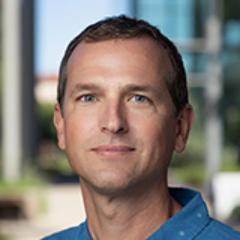
Lee Panich is a Professor in SCU’s Department of Anthropology, where he has worked since 2010. In his research and teaching, he uses a combination of archaeological, ethnographic, and archival data to examine the long-term interactions between California’s Indigenous societies and colonial institutions, particularly the mission system. He has conducted investigations of Native life at various colonial-era sites, including Mission Santa Clara. On these projects, he has been fortunate to partner with members of the Muwekma Ohlone Tribe and the Ohlone Indian Tribe, scholars from a range of institutions, as well as numerous students and colleagues from SCU. Among other publications, Lee is the author of Narratives of Persistence: Indigenous Negotiations of Colonialism in Alta and Baja California (2020).
Current Project Leads

Ryan Anderson, Assistant Professor of Anthropology, is a cultural and environmental anthropologist. His current research focuses on conservation, sustainability, and development along the California coast (in Mexico and the US). This includes research about coastal erosion and sea level rise adaptation in California, and ongoing work on conservation and governance in Cabo Pulmo, Baja California Sur, Mexico. Dr. Anderson also works on projects about the histories of environmental and social change in Silicon Valley and the Bay Area, a topic which he has integrated into various courses here at SCU.
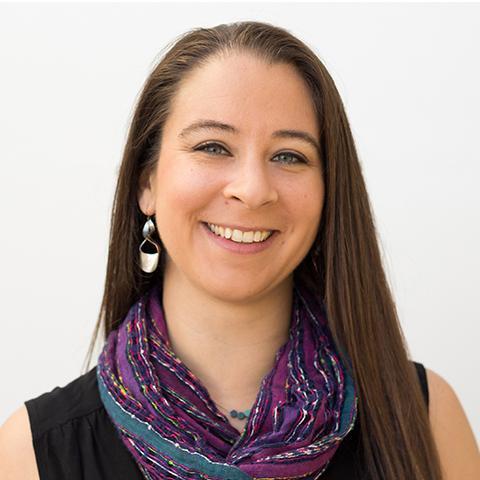
Lauren Baines is Assistant Director of SCU’s de Saisset Museum, which houses a permanent collection of over 12,000 objects of art and history and offers an array of exhibitions and programs addressing aspects of California and campus heritage, as well as visual art from various mediums and movements. In her role, in addition to marketing and programming responsibilities, she curates the museum’s temporary exhibitions, develops and coordinates additions to the ongoing exhibition California Stories from Thámien to Santa Clara, and manages the museum’s educational offerings inclusive of Integrated Education opportunities for SCU students and the California History Docent Program. Baines also serves as the Ohlone Initiatives Implementation Co-Coordinator at SCU and was a member of the Ohlone History Working Group. Throughout her projects, Baines is interested in assisting students and members of the wider community find meaningful connections with and a diverse understanding and appreciation of the arts and cultural heritage.
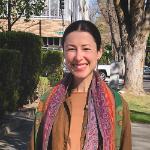
Brita Ariel Bookser is an Assistant Professor in the Department of Child Studies and a faculty affiliate of the Community Heritage Lab. Her research and teaching focus on early childhood, educational (in)equity, and transformative pedagogy. Brita prioritizes team science and community partnerships, and has recently collaborated with the Black Cultural Zone, KQED Public Media of Northern California, and the California Arts Council, among others. Her current projects focus on (counter)storytelling and culturally relevant and affirming children’s literature. Additionally, she is developing a new line of research about museum-based education, experiential learning, and school-family-community partnerships in collaboration with the de Saisset Museum.
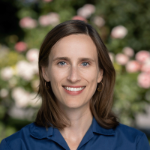
Maia Dedrick is an Assistant Professor of Anthropology and an anthropological archaeologist who studies food systems, particularly in Yucatán, Mexico. She uses the study of plant remains from archaeological sites (called archaeobotany or paleoethnobotany) among other techniques to conduct research in collaboration with communities for whom it is relevant as a matter of heritage and possible inspiration today. Her previous research project involved the excavation of houses and gardens to understand how farmers' livelihoods changed throughout the colonial period. Currently, she is working with a team of academic and community experts to understand past and present climate change and agricultural adaptations to it, especially on communally-held (ejido) lands in Mexico.
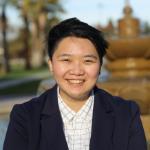
Em Dang is the manager of the WAVE+Imaginarium VR Lab, where they have specialized in VR development and game design since 2018. Em creates curriculum about VR development and usage, 3D environment design, game programming, 3D modeling and animations, procedural and interactive art, and UX/UI design in VR. They also serve as project manager for student teams implementing XR projects for SCU research and industry partners. Em conceptualized the AR framework for the Ohlone tour in 2021, and has since hosted Ohlone community lab visits and mentored Imaginarium students Vedya Konda and Elliot Lee, who created 3D assets, environments, and other app features for the project.

Meg Eppel Gudgeirsson is a Lecturer in the History Department and the Digital Humanities Initiative Faculty Associate Coordinator. She teaches HIST 186: California and HIST 27/127 Public and Digital History. In different ways, both courses interact with both SCU and Indigenous histories. HIST 186 seeks to place the Indigenous history as both central to our understanding of California’s past as well as recognizing the reality that Indigenous people remain a vibrant part of our community today. HIST 27/127 considers how the public engages with history, including how SCU understands its own past and its impact on its identity today.
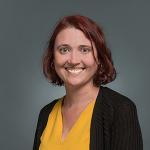
Danielle Heitmuller is an Assistant Professor of Digital Illustration and Animation, and a creative partner in the Ohlone AR Tour project. Her work explores the creation of stories and experiences that immerse audiences in fantastic worlds, while also giving new perspectives to issues of social justice and environmental change. In addition to her work on the Ohlone AR tour, Danielle is developing an interactive experience related to climate change and animating a film that addresses issues of identity, cultural norms, and gentrification for the young audience.
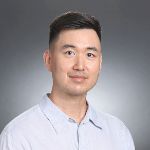
David Jeong is an Assistant Professor of Communication and Director of the WAVE+Imaginarium VR Lab and the SCU Media Lab. His research interests center around VR/XR design and production, human-computer interaction, social media, and online communities. He has supported CHL Directors Amy Lueck and Lee Panich since 2020 on efforts to decolonilize and historicize Ohlone heritage at Santa Clara University by leading virtual and augmented reality projects, presenting at conferences, and hosting lab visits from the Ohlone community. He teaches a course titled VR Design and Development (COMM 170), which provides students a broad overview of topics and skills relevant to the VR space, including 3D modeling, game design, spatial audio, and 360 film.
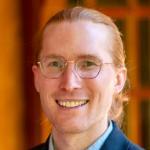
Kai Lukoff is an Assistant Professor of Computer Science and Engineering, Director of the Human-Computer Interaction Lab, and a co-leader of the Ohlone AR Tour project. He uses human-centered methods to research, design, and develop technologies with social impact. Based on his experience working together with the Muwekma Ohlone tribe and interdisciplinary collaborators in the Community Heritage Lab, he is developing the “The AR Toolkit for Social Justice Tours,” a guide and set of resources that will empower educators and storytellers worldwide to create alternative tours that challenge traditional narratives.
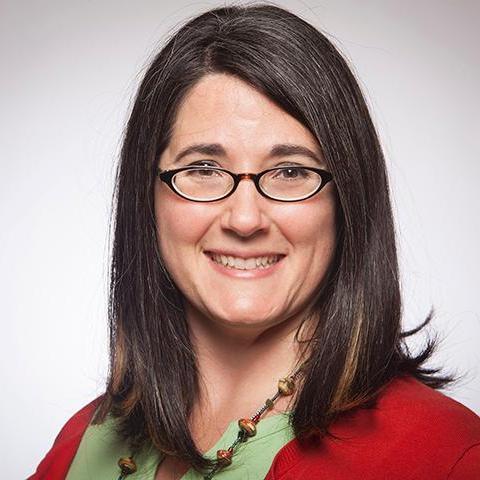
Nadia Nasr is the Head of Archives & Special Collections and oversees all administrative functions pertaining to the rare and unique materials held by the University Library. This includes the manuscripts and library books inherited from the Franciscans of Mission Santa Clara de Asís and the records generated by the Jesuits who founded and have administered the University since 1851. Nadia collaborates with faculty to integrate these collections into classroom instruction and digital humanities projects, holding a strong belief in the potential of these materials to generate transformative learning experiences and promote a better understanding of the past, present, and future.
Campus Partners
The University Archives and Special Collections, located on the top floor of the Learning Commons, holds important mission-era and early California collections (including Mission manuscripts, musical compositions, and sacramental records) as well as papers and records from notable alumni, local leaders, and organizations. Its strengths include historical materials related to Catholic church organizations and communities (including archives of women religious orders dating to the mid-1850s), immigrant histories, the development of Santa Clara Valley agriculture, and the history of Santa Clara College. It has worked on digitization projects since the early 2000s, with over 50,000 images and documents available for online access.
de Saisset Museum - Founded in 1955, the de Saisset Museum is Santa Clara University’s museum of art and history. The museum stewards a permanent collection of nearly 12,000 objects and provides various opportunities for students, faculty, staff, and external researchers to study these materials. Since the late 1970s, the de Saisset has offered an exhibition and corresponding educational programs addressing aspects of California history focused on Ohlone heritage, Mission Santa Clara, the Ranchero period, and early Santa Clara College. The exhibition was reimagined with members of the Ohlone Indian Tribe, Muwekma Ohlone Tribe, other Native communities, and subject matter experts, with California Stories from Thámien to Santa Clara opening in early 2020. This ongoing exhibition continues to incorporate new interpretive content, including projects developed in collaboration with SCU students, faculty, and staff.
The WAVE+Imaginarium lab is a space dedicated to exploring the potential of extended reality (VR, AR, MR), data visualization, digital art, and game design. They celebrate the transformative capabilities of mixed reality technologies, enabling intuitive data visualization, pushing the boundaries of digital art, and leveraging game design for education and storytelling. The lab is also more than just a physical space; it cultivates a community that thrives on active collaboration, fostering an environment of shared learning and imaginative exploration. By bridging the gap between diverse fields and fostering interdisciplinary collaboration, the lab unites students and faculty members, creating a community of creators and researchers passionate about exploring the possibilities of emerging technologies and creative expression.
The Digital Humanities Initiative at SCU connects faculty, staff, and students across departments and schools who use digital methods to conduct research centered on the human, and those who ask humanistic questions of digital tools and methods. DH is deeply interdisciplinary, collaborative, and welcoming to all researchers from across the university invested in reflecting on the intersection of the human and digital that is at the core of the identity of The Jesuit University in Silicon Valley.
Student Researchers
Liam A'Hearn (AR Tour)
Aryan Begade (AR Tour)
Audrey Bland (Archaeology)
Oliver Branham-Upton (Native Gardens and Landscape Design)
Mohan Raj Chandrasekar (AR Tour)
Reilly Duncan (Archaeology/3D Modeling)
Chelsie Gnanasekaran (AR Tour)
Isabella Gomez (Cultural Campout)
Cinthya Jauregui (AR Tour)
Shobha Joneja (Archaeology/Cultural Campout)
Tara Khambadkone (AR Tour)
Brian Khuu (AR Tour)
Madison Nguyen (AR Tour)
Tiffany Nguyen (AR Tour)
Prakriti Patnaik (AR Tour)
Sarah Hazel Sallee (AR Tour)
Caroline Seaman (AR Tour)
Dominic Woetzel (AR Tour)
Xinqi Zhang (AR Tour)
Past Student Researchers
Trizha Aquino (Archaeology)
Kiersten Brady (Archaeology)
Natalie Brauser (Archaeology)
Teresa Contino (Rhetorical Sovereignty)
Alec Corn (Campus History)
Bates Detweiler (GIS Mapping)
RJ Giese (Archaeology)
Nora Fluetsch (Archaeology)
Raymond Hartjen (Archaeology)
Daniela Hernandez (Archaeology)
Vedya Konda (3D Modeling, AR Tour)
Elliot Lee (3D Modeling, AR Tour)
Ross MacNeil (Campus History)
Alex Perez (Cultural Campout)
Tess Rosenberg (Archaeology)
Greta Setiz (Web Design)
Maggie Sorem (Archaeology)
Katie Stafford (Cultural Campout)
Danny Walsh (Web Design)
Serena Wang (Archaeology)